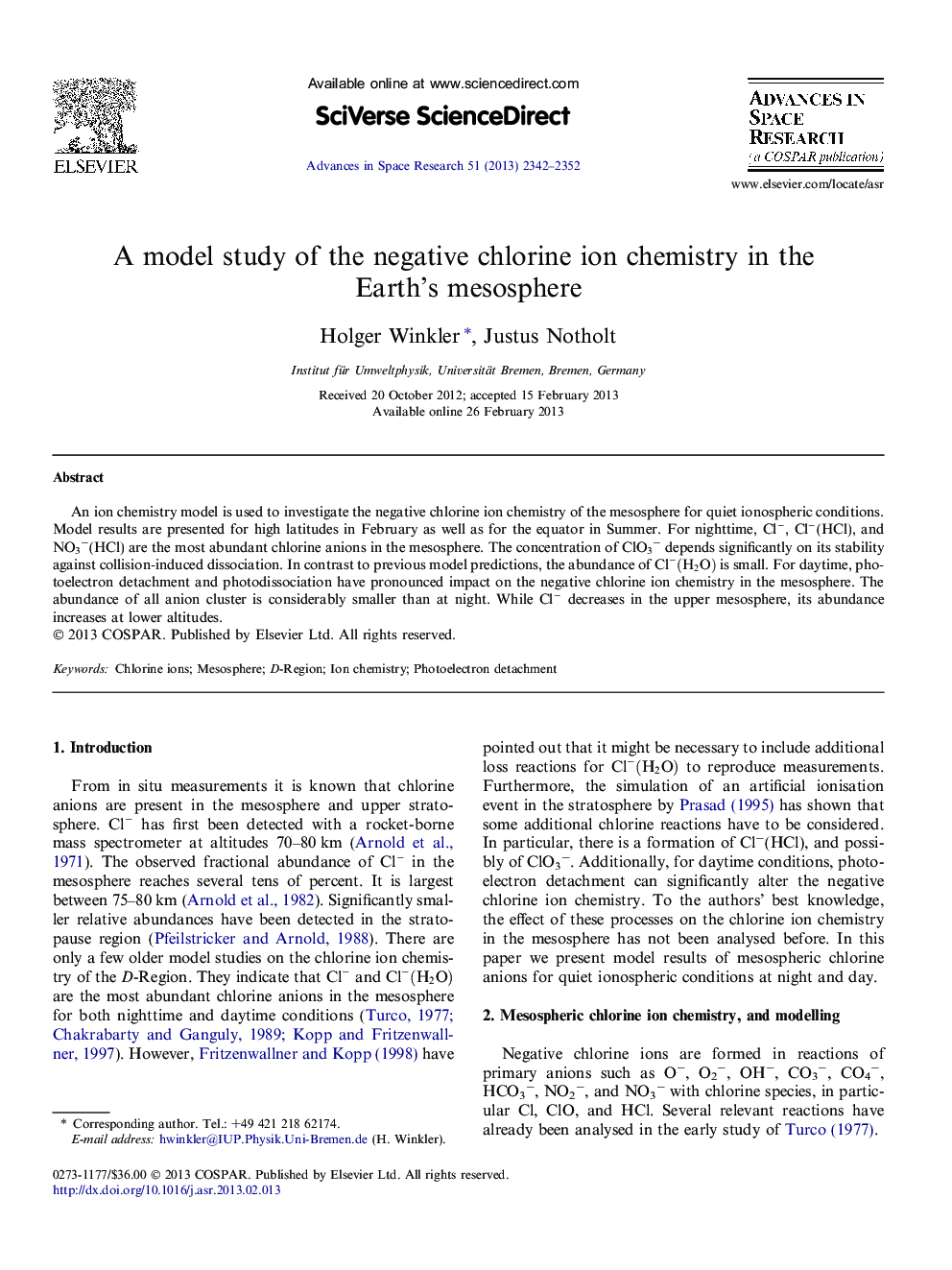| Article ID | Journal | Published Year | Pages | File Type |
|---|---|---|---|---|
| 1764366 | Advances in Space Research | 2013 | 11 Pages |
An ion chemistry model is used to investigate the negative chlorine ion chemistry of the mesosphere for quiet ionospheric conditions. Model results are presented for high latitudes in February as well as for the equator in Summer. For nighttime, Cl-Cl-, Cl-Cl-(HCl), and NO3−(HCl) are the most abundant chlorine anions in the mesosphere. The concentration of ClO3− depends significantly on its stability against collision-induced dissociation. In contrast to previous model predictions, the abundance of Cl-(H2O)Cl-(H2O) is small. For daytime, photoelectron detachment and photodissociation have pronounced impact on the negative chlorine ion chemistry in the mesosphere. The abundance of all anion cluster is considerably smaller than at night. While Cl-Cl- decreases in the upper mesosphere, its abundance increases at lower altitudes.
